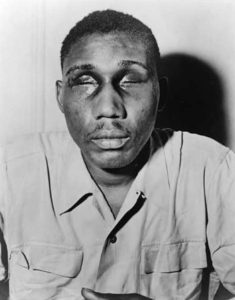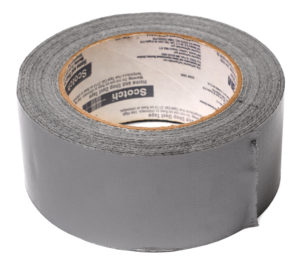The Week in History, Feb. 9th – 15th

Alice Walker in 20071
“In nature, nothing is perfect. Trees can be contorted, bent in weird ways and they’re still beautiful.”
― Alice Walker2
Controversial author and activist Alice Walker3 was born this week in 1944. Her best known work is The Color Purple which won the Pulitzer Prize for Fiction in 1983, making her the first woman of color to do so. The work was also adapted into a motion picture in 19854 and a theatrical musical in 20045.
The Clark Library has the DVD of the motion picture available for loan in the general collection at PS3573.A425 C62 2007.
You can find out more about Alice Walker by checking out, Alice Walker: a life, currently on display in the Cannell library’s featured February “Read Black” display near the entrance to the library. (PS3573.A425 Z93 2004)
Seventy-four years ago this week, an honorably discharged soldier was returning home by Greyhound bus after military service in the South Pacific. He had earned, among other medals, a service star6 decoration for performing his duties while under enemy fire.
At a rest stop he asked the bus driver if there was enough time to use the restroom. After an argument, the driver conceded that the soldier could use the rest room. The soldier returned and the bus drove on. At the next stop in Batesburg, South Carolina, the driver called the police. The chief of police arrived with his deputies, pulled the soldier off of the bus and severely beat him for his perceived disobedience. He answered a question, “yes”, instead of “yes, sir”.
“In none of the papers is there any suggestion there was verbal or physical violence on the part of Sergeant Woodard. It’s quite unclear what really happened. What did happen with certainty is the next morning when the sun came up, Sergeant Isaac Woodard was blind for life.”7

There was a public outcry, promoted in part by the filmmaker/actor Orson Welles who made the injustice known in his radio program, Commentaries9.
The chief of police was arrested, tried in a court of law but quickly acquitted by an all white jury.
The NAACP10 met with President Truman, who then created the Commission on Civil Rights. In a speech broadcast on June 29, 1947 President Truman announced,
“It is my deep conviction that we have reached a turning point in our country’s efforts to guarantee freedom and equality to all our citizens. Recent events in the United States and abroad have made us realize that it is more important today than ever before to insure that all Americans enjoy these rights. When I say all Americans—I mean all Americans.”7
Find out more about Isaac Woodard by ordering the book, Unexampled courage : the blinding of Sgt. Isaac Woodard and the awakening of President Harry S. Truman and Judge J. Waties Waring, through Clark College’s interlibrary loan.

This week in 1943 Vesta Stoudt12 was helping the war effort by working in an munitions-ordinance plant when she had a great idea to help save time and possibly lives. The mother of two navy sailors, she worried that the boxes that held the munitions were too slow to opened in time when needed. It is unclear if she either completely created,or found and modified, duck cloth (from the dutch doek, meaning linen canvas13) saturated with waterproof polyethylene and coated with a sticky adhesive backing to use for her idea. With the waterproof tape, the cartons could be sealed and protected until it’s contents were needed. Then the tape could be stripped off the carton much more quickly than the method used before.
She took the idea to her superiors who didn’t think much of it.14
Undaunted, she wrote to President Roosevelt who liked the idea. He forwarded it on to the War Production Board who then approved it
Vesta Stoudt won the Chicago Tribune’s War Worker Award for her innovation and persistence12
The tape was put to use after the war for a variety of military and domestic reasons. It began to be used in the 1950’s to seal air ducts and soon began to be referred to as “duct tape” too.
Learn more about duck/duct tape and other inventions by reading, Encyclopedia of modern everyday inventions, found in the general collection at T20 .C56 2003
1 https://commons.wikimedia.org/wiki/File:Alice_Walker.jpg
2 https://www.goodreads.com/author/quotes/7380.Alice_Walker
3 https://alicewalkersgarden.com/
4 https://en.wikipedia.org/wiki/The_Color_Purple_(film)
5 https://en.wikipedia.org/wiki/The_Color_Purple_(musical)
6 https://en.wikipedia.org/wiki/Service_star
7 https://en.wikipedia.org/wiki/Isaac_Woodard
8 https://commons.wikimedia.org/wiki/File:Isaac-Woodard-1946.jpg
9 https://www.wellesnet.com/orson-welles-sought-justice-for-isaac-woodard-70-years-ago/
10 https://www.blackpast.org/african-american-history/woodard-isaac-1919-1992/
11 https://commons.wikimedia.org/wiki/File:Duct-tape.jpg
12 https://en.wikipedia.org/wiki/Vesta_Stoudt
13 https://en.wikipedia.org/wiki/Cotton_duck
14 https://en.wikipedia.org/wiki/Duct_tape

